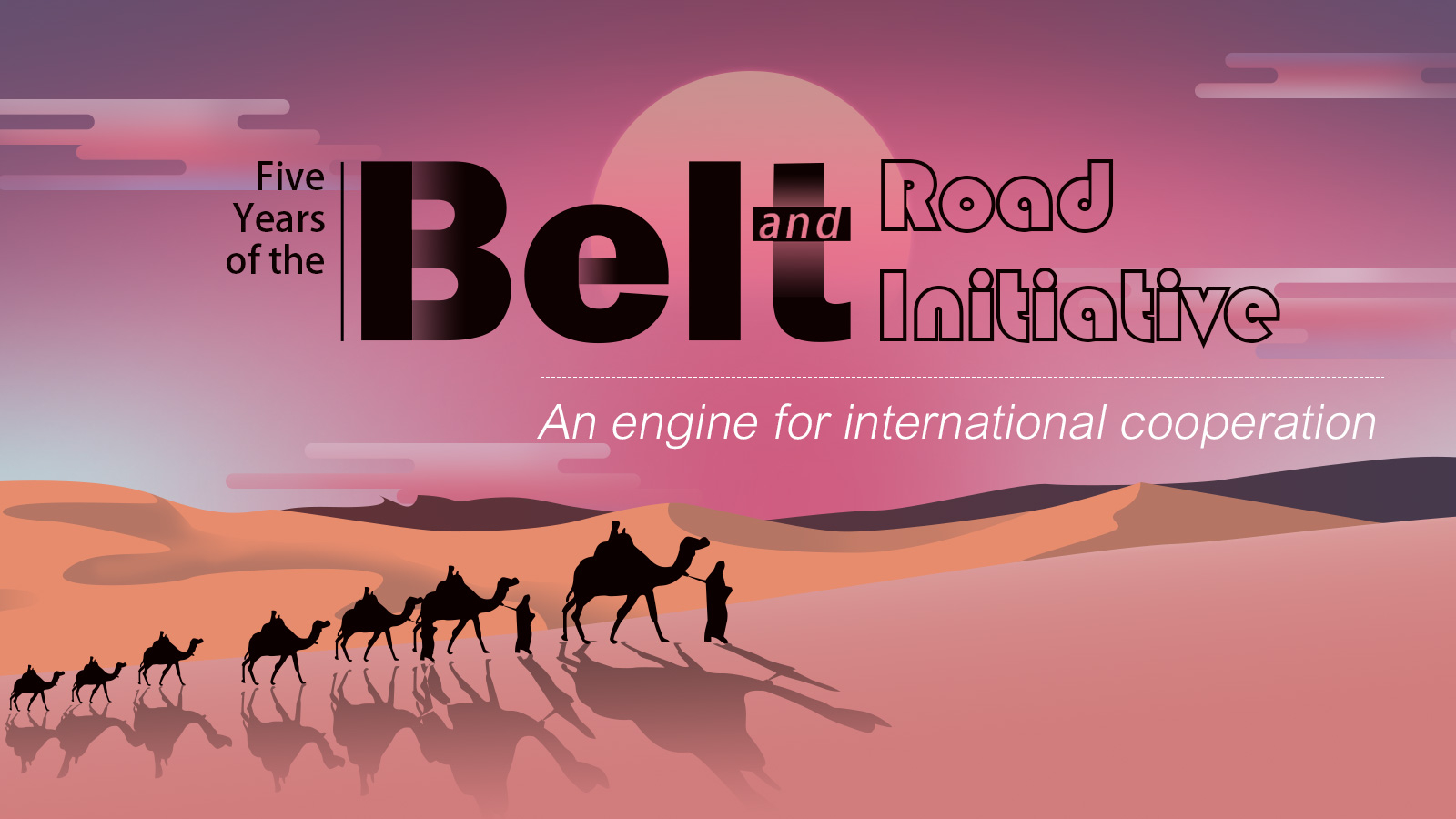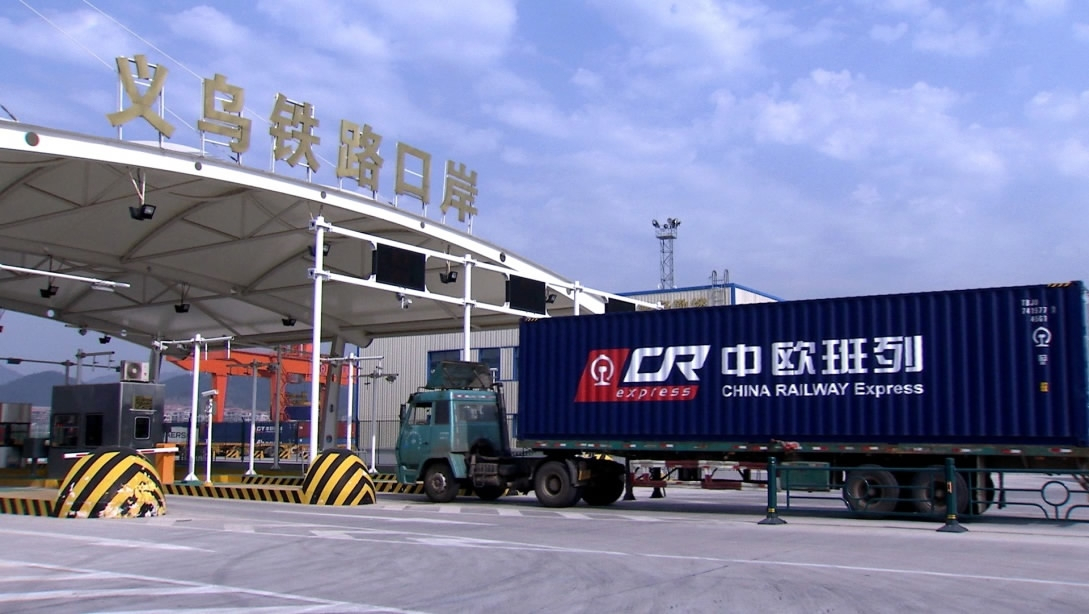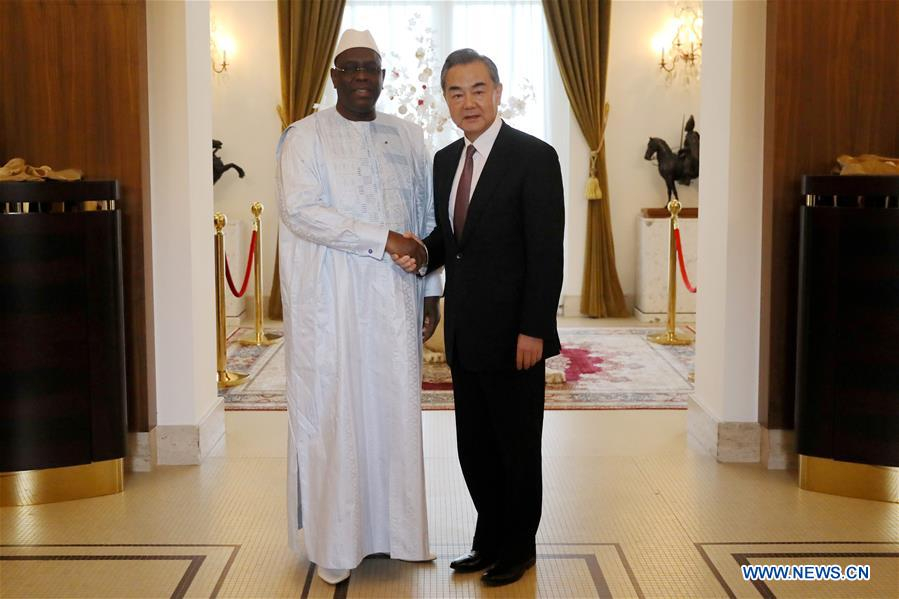
Opinion
20:47, 22-Apr-2019
BRI: An engine for international cooperation
Updated
15:36, 26-Apr-2019
CGTN

Editor's Note: With the second Belt and Road forum for international cooperation kicking off this week, the BRI has been thrust into the media limelight. What has been achieved in the past five years since the initiative was first put forward? How to turn the BRI vision into reality? Five Years of the Belt and Road Initiative is a book series co-published by Chongyang Institute for Financial Studies, Renmin University of China and Foreign Language Press, analyzing the initiative from the perspectives of policy communication, infrastructure connectivity, trade connectivity, financial integration and people-to-people connectivity. Here is an excerpt of the episode on policy communication.
Since it was launched in 2013, China has repeatedly emphasized that the ultimate goal of the Belt and Road Initiative (BRI) is to establish a community of common interests, shared future, and responsibility leading to mutual political trust, economic integration, and cultural inclusion.
For this end, China has shown its utmost sincerity. Economically, the country's efforts in deepening its reform and opening-up deserve applause. Data-wise. In 2017, China's total import and export value to countries engaged in the BRI reached 1.44 trillion U.S. dollars, accounting for 36.2 percent of China's total import and export trade.
In the same period, China has invested 14.36 billion U.S. dollars in BRI countries, standing for 12 percent of China's overall foreign investments. China's infrastructural inputs are a boon for all the countries traversed.

A cargo truck enters the gate of the Yiwu Railway Port on April 15, 2017. /CGTN Photo
A cargo truck enters the gate of the Yiwu Railway Port on April 15, 2017. /CGTN Photo
Since the opening of the Xi'an-Kazakhstan international freight rail, the number of trains between China and Europe has rocketed, with a 300-fold increase in volume. Thousands of products including daily necessities, household items, health products, and food have been flowing freely via railway among countries along the route.
Politically, the three tiers of administrations – central government, departmental committees and localities – have seen better interactions on the BRI in the past few years. The high-level visits have provided strong political impetus for the BRI construction. Chinese President Xi Jinping has been offering olive branches to relevant countries and organizations on every important international occasion.
Apart from endeavors at the governmental level, individuals' role in the BRI construction can never be underestimated. Hu Jun, the dispatch captain for the China Railway Shanghai Group at Yiwu West Station of Jinhua City, has to work in scorching summer with rail and carriage temperatures exceeding 50 Celsius degree and freezing winter where dripping water freezes to ensure that shunting operations are safe and punctual.
Hu is not alone. Xue Biao and his colleagues working on a Chinese contracted project for ancillary facilities of Kuwait University City have to work on night shifts as high temperatures in daylight make desert soil quality inappropriate for construction. To ensure that the project remains on schedule, Xue and his coworkers have not returned home for over two years. Thanks to their efforts, the project is due to be completed by the end of this year, providing Kuwaiti students access to more advanced educational facilities.
China's multi-win projects mean concrete benefits to individuals from participating countries. Laba Thiam from Senegal had no full-time job and thus had to rely on her parents for a living before she joined the China-Senegal cooperation project on Thies-Touba highway. The steady income from China Road & Bridge Corporation changed her life, making her an independent individual.

Senegalese President Macky Sall (L) greets Chinese State Councilor and Foreign Minister Wang Yi in Dakar, Senegal, on January 6, 2019. /VCG Photo
Senegalese President Macky Sall (L) greets Chinese State Councilor and Foreign Minister Wang Yi in Dakar, Senegal, on January 6, 2019. /VCG Photo
Lin Jinli from Cambodia is another typical example. Serious illness forced Lin to suspend her schooling for five years. Thanks to her Mandarin courses at a Chinese Elementary School, Lin regained confidence and aspirations. This eventually turned Lin into a principal of the Peide Chinese School in Cambodia.
The BRI has been gradually recognized and welcomed by the international community. Polls suggest that only 6 percent of overseas respondents had heard of the BRI in 2014, but the figure jumped to 18 percent in 2017, of which 53 percent recognized the initiative's positive significance for the regional and global economy.
In 2017, China clinched about 50 BRI agreements, nearly half of the total number of agreements to that date. By 2018, almost all Central and Eastern Europe nations had become BRI members. A slew of countries and organizations from Northern Europe, Latin America, Asia Pacific and South Pacific have expressed their intention to join the BRI. In 2019, Italy became the first G7 country to endorse the initiative.
"China will never relent in its effort to pursue a global community of shared future," Chinese President Xi Jinping pledged at the China International Import Expo in November 2018. The BRI is not a property of China, but an attempt to unite all participant countries to co-write international rules, co-administrate global affairs and share the fruits of common development.
Stories in this series:
(If you want to contribute and have specific expertise, please contact us at opinions@cgtn.com)

SITEMAP
Copyright © 2018 CGTN. Beijing ICP prepared NO.16065310-3
Copyright © 2018 CGTN. Beijing ICP prepared NO.16065310-3